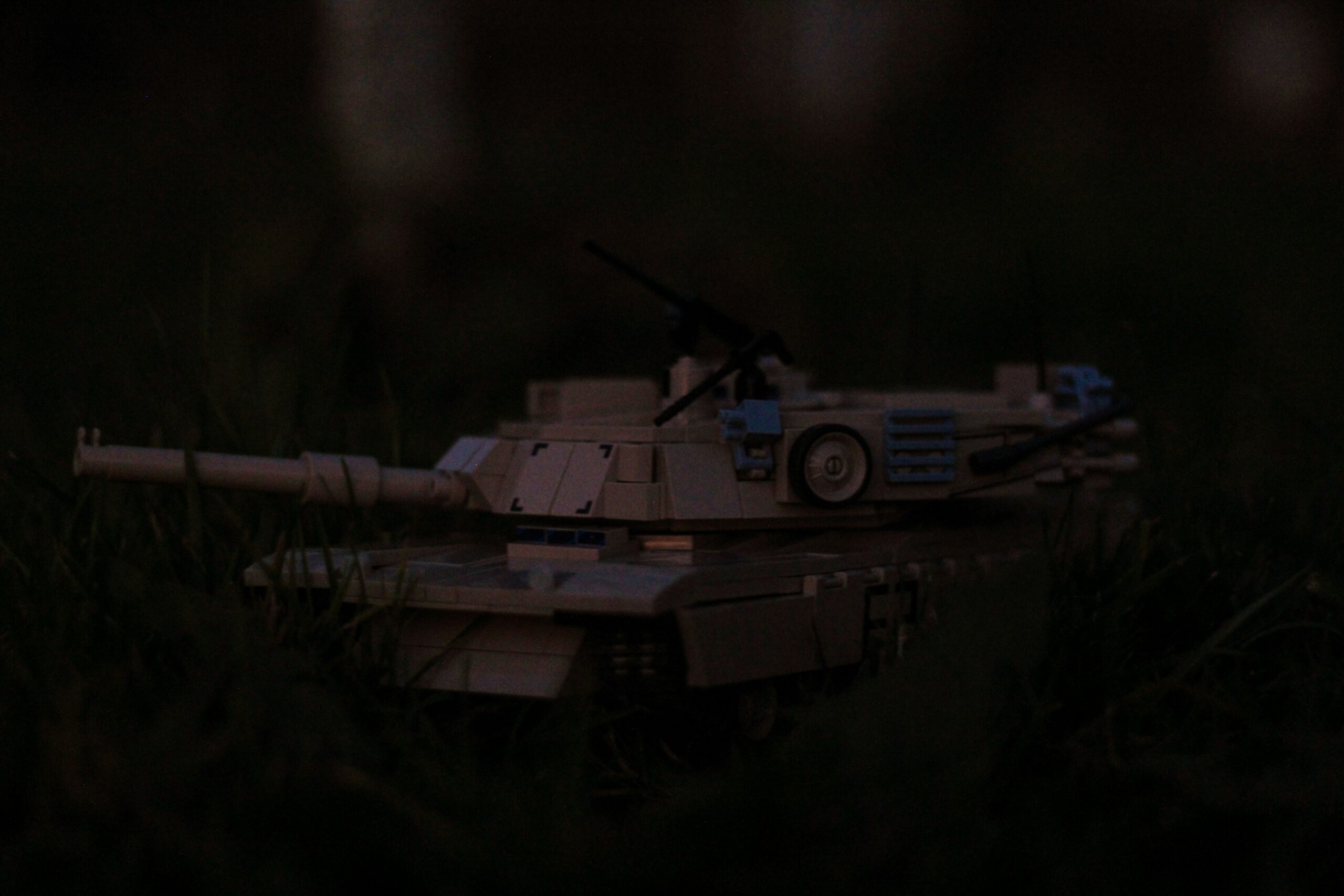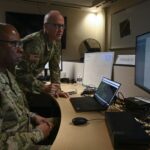Talks on a shared tank picked up pace in 2014 after both armies logged rising repair bills on ageing armour. A year later the cabinets signed a short letter that set ambition but left tech details blank. The line ministries then asked industry to shape a concept that would fit new battlefield threats seen in Eastern Europe and the Middle East.
In 2015 Krauss-Maffei Wegmann from Germany and Nexter from France formed KNDS, a single holding. Rheinmetall joined later, adding big-calibre gun skill. The trio created a steering group in Cologne. Even so, each nation kept close watch on workshare, fearing any slip would favor the partner.
Officials framed MGCS not as one vehicle but a modular family tied by a secure data spine. Unmanned scouts, loiter drones, and support trucks would plug into that spine. Command could mix units as a task force then break them off again with little delay. Recent programs, however, show signs of strained Franco-German defense cooperation, complicating workshare and timelines across joint efforts.
Eight Pillars of Work
In April 2024 the two ministers—Sébastien Lecornu and Boris Pistorius—signed a protocol that splits the programme into eight pillars. Each pillar has a lead, milestones, and budget slice. The model aims to speed reviews and stop overlap.
- Pillar 1 – Mobility Platform. Lead: Germany. Covers chassis, suspension, engine block, gear drives.
- Pillar 2 – Main Armament. Joint lead. Focus on 130 mm smooth-bore gun, advanced ammo line, turret ring.
- Pillar 3 – Secondary Weapons. Lead: France. Includes anti-tank missiles, remote weapon station, counter-drone launchers.
- Pillar 4 – Command and Control. Joint lead. Mesh radios, encryption layers, digital map tools.
- Pillar 5 – Simulation and Training. Joint lead. Mixed-reality domes, crew e-manuals, after-action review tools.
- Pillar 6 – Sensors and Optronics. Lead: France. Thermal cameras, radar, laser warn gear.
- Pillar 7 – Active Protection. Lead: Germany. Hard-kill interceptors, soft-kill dazzlers, threat libraries.
- Pillar 8 – Support and Logistics. Joint lead. Spare parts cloud, depot tooling, rail transport kits.
Parliament briefings in both capitals note that workload now sits close to a fifty-fifty share, though some lawmakers still voice minor doubt.
MGCS Main Armament and Protection Push Limits of Tank Design
Protection
Design teams target a crew cell able to absorb shaped-charge hits at short range. Mock-ups fired at Bourges test site last year cut spall level by roughly 30 percent versus present armour. An active protection layer will seek, track, then break incoming projectiles before impact.
Firepower
The 130 mm gun line trots ahead at Rheinmetall’s Unterlüß plant. Early barrel stress runs passed, but a second run found hairline cracks round the collar. Engineers swapped alloy mix; next result due early summer. A new smart fuse will let shells switch mode in flight, so commanders pick blast or penetration after target id.
Sensor Fusion
Crews will read one main display, not clusters of dials. Thermal, radar, acoustic, and drone feeds merge on that screen in near real time. Trials showed short lag spikes; firmware patch trimmed frame delay by two ticks.
Energy Use
A hybrid diesel-electric package sits on a Munich bench. It can drive silent for three kilometres, then hand back to diesel. Batteries eat hull space and push weight to about 60 t, so designers trade range, payload, and fuel rate with each tweak.
Industrial Network Expands Around MGCS Program Backbone
The project company, founded January 2025, holds four equal shares:
- KNDS Deutschland
- KNDS France
- Rheinmetall Landsysteme
- Thales SIX GTS France
Key roles break down as follows:
- KMW: running gear, track links, final assembly paint.
- Nexter: turret shell, loader arm, ergonomics.
- Rheinmetall: gun barrel, propellant research, tungsten rods.
- Thales: sensor glass, secure radios, battlefield network core.
Suppliers stretch across Europe. Czech mills forge sprockets, Spanish shops weave carbon armour, while a Polish plant machines road wheels. Each vendor faces monthly cyber audits; one phishing blow last August paused a batch, costing six days. The new Franco-German tank project takes shape with a confirmed industry team, though some partners remain cautious about expanding the core group.
Development Ladder
The ministries laid a clear ladder:
- 2023–2025: digital twins, component risk cuts.
- 2026–2030: two demonstrator hulls, one turret test bench, design freeze mid-2028.
- 2031–2039: field trials in desert, snow, and urban zones; line tooling.
- 2040: first units handed to both armies.
Every gate carries a budget lock. Miss a deadline by over eight weeks, the next cheque holds until fix. That rule caused loud debate, yet watchers say it sharpens focus. The 2040 tank project continues to face scrutiny from both parliaments and industry analysts, who watch closely how deadlines translate into real output.
Export Framework
Paris and Berlin keep a strict dual-key for any sale outside. Both must sign else the deal dies. Early lists show likely openings after 2042 to:
- Poland
- Norway
- Australia
- UAE
A joint export board will sit in Brussels. Each bid scores on security risk, human-rights record, and tech-transfer hazard. Scores too low end talks quick. Some analysts doubt politics can be boxed so neat, but at least the rule stands.
Strategic Weight for Europe
MGCS arrives as Europe seeks firmer defence autonomy. Officials argue that a shared heavy platform:
- Standardises ammo, fuel, datalinks.
- Cuts duplicate R&D budgets.
- Offers common training lanes.
NATO remains core, yet leaders want local depth if U.S. focus shifts. A working MGCS could show that large European programmes finish on calendar, not just plan sheets.
Hurdles in Sight
Money gaps loom first. German parties weigh air-defence buys against armour lines. French budget law caps yearly increases; delays squeeze R&D. Technical sprawl also bites. Cramming AI, hybrid drives, and advanced armour in one leap risks extra re-work.
Political shifts stand second. Elections in both states lie within five years. New coalitions may push other priorities. Lawyers built break fees into contracts, still sustained funding depends on will.
Main Ground Combat System Nears Prototype Phase – MARCH 2025 UPDATE
Recent moves point to steady if slow climb:
- Thales share confirmed by cartel office.
- First chassis sub-assembly sent to track sled test.
- Drone link test reached 30 km stable range.
- Turret ring machining met tolerance at Roanne shop.
Full demonstrators should roll late 2027. One will hold a three-person crew, the other tests an unmanned turret. Trial set covers:
- Rapid autoload under high dust.
- Snap fire past 4 km.
- Nine-hour silent watch on battery alone.
Cold-weather runs book space at Rovaniemi Arctic range early 2029.
MGCS Faces Global Competition as Panther and K2 Target Same Markets
While MGCS forms, rival offers chase customers:
- Rheinmetall markets Panther KF51 to Italy and Hungary.
- South Korea pushes K2, with strong offset deals.
- The U.S. Abrams X concept tours shows but weighs heavy for small budgets.
MGCS team says its seamless digital stack will outweigh rival specs, yet accepts buyers will compare every euro.
Extended Value Chain
Economic studies by Ifri in Paris set job estimates near 2 400 direct posts plus 8 500 indirect across Europe. Steel, optics, and software hubs all gain slices. Regional leaders claim this boost may anchor youth in industrial districts that lost auto parts lines.
A short clause in the protocol orders a life-cycle review from day one. Targets include:
- 15 percent lower CO₂ per kilometre than Leopard 2A7.
- 30 percent recyclable mass by weight.
- Noise cut to under 95 dB outside hull at idle.
Some critics call the goals optimistic, yet designers note electric mode and modular armour help reach them.
Data Security Measures
Threat studies tag the digital backbone as high-value target. Steps now in place:
- End-to-end encryption with post-quantum keys.
- Air-gapped software build pipeline.
- Red-team hack trials twice a year.
A breach drill last winter forced a full network reset inside 45 min. Test reports marked two weak audit trails, since patched.
Wider European Cooperation
Brussels hopes MGCS sets a template. Lessons here may feed into follow-on work for:
- A European unmanned combat vehicle.
- Shared artillery with 155 mm extended-range round.
- Networked short-range air defence.
Officials say each success will ease next step, yet one failure could chill appetite fast.
Summary Outlook
MGCS stands at design freeze gate. The work draws tight budget rules, heavy political watch, and solid industrial push. If key milestones hold, early crews could begin unit conversion by 2040. The tank should field stronger protection, longer reach, and faster information flow than today’s armour. This comes as Europe also advances its air power with a €3.2 billion contract milestone in the FCAS next-gen fighter program.
For Europe the programme tests whether two large states can share costs and risks without shedding pace. The next five years—the time of prototype build—will prove if that gamble pays.
REFERENCE SOURCES:
- https://www.defensenews.com/global/europe/2024/05/08/french-german-tank-project-company-is-closed-to-partners-for-now/
- https://www.lemonde.fr/en/economy/article/2024/07/13/defense-competition-between-tank-manufacturers-rekindled-by-the-war-in-ukraine_6682653_19.html
- https://www.reuters.com/world/europe/france-germany-push-with-2040-joint-tank-project-2024-04-26/
- https://www.twz.com/land/new-franco-german-tank-project-takes-shape-with-industry-team-confirmed
- https://en.wikipedia.org/wiki/Main_Ground_Combat_System
- https://www.lemonde.fr/economie/article/2024/04/26/char-du-futur-industriels-francais-et-allemands-vont-enfin-se-partager-les-premiers-contrats_6230158_3234.html
- https://www.hensoldt.net/programs/smart-tank-rolling-in
- https://www.rheinmetall.com/en/media/news-watch/news/2025/04/2025-04-17-mgcs-project-company-gmbh-established-in-cologne



